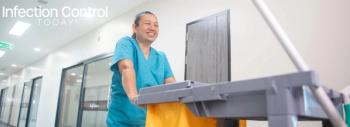
- Infection Control Today, November/December 2023 (Vol. 27 No. 8)
- Volume 27
- Issue 8
Overcoming Challenges to Eye Device Reprocessing: A 3-Year Study
A recent American Journal of Infection Control study, led by Katharine Hoffman, MPH, CIC, LSSGB, and Lisa Waldowski, DNP, RN, CIC, applies Lean Six Sigma to improve eye device reprocessing. The research highlights the challenges, emphasizes adherence to manufacturer instructions, and promotes best practices for patient safety.
Issues related to the cleaning, disinfection, and sterilization of eye devices in health care settings are not a topic that arises often. However, in a
To learn more about the study, Katharine Hoffman, MPH, CIC, LSSGB, infection prevention community health program manager, JPS Health Network, Fort Worth, Texas, and lead investigator, and Lisa Waldowski, DNP, RN, CIC, executive director of infection prevention and control, Wellstar Health System Atlanta, Georgia, also on this study, spoke with Infection Control Today® (ICT®).
“The intent of this [study] was to take a significant deep dive, look at any area of opportunity across the network,” Hoffman told ICT. “Much of this was identified from a mock survey and from previous awareness, with The Joint Commission highlighting concerns around ophthalmic and optometric devices, and putting that all together, and starting. Then, with infection prevention, we're very much investigators. You have to do that shoe leather work, as [Waldowski] likes to call it, and get in there, start asking questions, get to know the staff look for any other concerns, and see what you can find. And with each finding, follow it through and try and close the loop.”
This is a follow-up to an
The investigators emphasized the complexities of obtaining, understanding, and implementing device instructions. This endeavor was more intricate than expected, involving detailed device-specific instructions and necessitating clear communication with frontline staff to drive change.
The study used the Lean 6 Sigma methodology to conduct a thorough evaluation of the processing of noncritical, semicritical, and critical devices. The assessment followed a hierarchical approach, considering relevant laws, regulations, manufacturer guidelines, evidence-based recommendations, consensus documents, facility risk assessments, and established policies and procedures.
The efforts of Hoffman, Waldowski, and their team, in conjunction with the multidisciplinary approach, focused on the application of instructions for use and evidence-based practices, promoting sustainability and furthering the prevention of health care-associated infections and patient harm.
Articles in this issue
about 2 years ago
Kitchen Nightmares: Health Care Foodborne Outbreaksabout 2 years ago
Chief Infection Prevention Officer: Leading the Way Into the Futureabout 2 years ago
Bug of the Month: I Like Swimming in Water and Popping Up in Foodabout 2 years ago
The Cleaning and Disinfection of Handheld EquipmentNewsletter
Stay prepared and protected with Infection Control Today's newsletter, delivering essential updates, best practices, and expert insights for infection preventionists.






